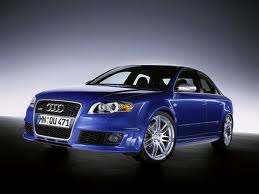


This edition of the Ford Mustang GT 5.0 V8 is the 4 speed / Manual version and was first brought out in 1982. This was at around the same time as the introduction of the 1982 Fiat X1/9 1.5 8V and the 1982 Lamborghini Countach LP500S.This particular Ford Mustang has a 4942cc Naturally Aspirated Petrol powerplant with 8 cylinders in a V formation.
The Mustang shares its Petrol V8 engine configuration with the likes of the 2023 Dodge Challenger SRT Demon 170 and the 2023 Ferrari SF 90 XX Spider 4.0 V8 Turbo. If you're looking for other fast cars which share the Mustang's Rear Wheel Drive, Coupe combination then how about the 1982 Fiat X1/9 1.5 8V or the 1965 Aston-Martin DB6 1965.
Weighing in at 1248 kgs (2751 lbs) this makes the Ford Mustang GT 5.0 V8 in the same weight category as the 2020 Audi A1 A1 Sportback 35 TFSI S tronic S line or the give or take 50kg.
![Mini Cooper Countryman John Cooper Works 1.5 Turbo - [2022] image Mini Cooper Countryman John Cooper Works 1.5 Turbo - [2022] image](/editionimages/2335.jpg)
The Ford Mustang shares the same bhp with the 2022 Mini Cooper Countryman John Cooper Works 1.5 Turbo (134 bhp)
In terms of power the 4942cc 16V V8 engine produces 157 bhp (117 kW) @ 4200 rpm similar to the 2022 Mini Cooper Countryman John Cooper Works 1.5 Turbo (134 bhp) or the 2020 Audi A1 A1 Sportback 35 TFSI S tronic S line (148 bhp).
The Naturally Aspirated V8 throws out 240 lb-ft (325.3 Nm) @ 2400 rpm placing it with cars of similar torque performance figures such as the 2022 Mini Cooper John Cooper Works Cabrio 2.0 Turbo (236 lb-ft) or the 2020 Ford Puma ST 1.5 Turbo (236 lb-ft).
If one combines the weight with power or torque performance for the Ford Mustang you can get a better idea of it's real world performance.
![Subaru Forester 2.0 XT Premium - [2017] image Subaru Forester 2.0 XT Premium - [2017] image](/editionimages/1752.jpg)
The 2017 Subaru Forester 2.0 XT Premium (150.8 bhp per ton) has similar Bhp Per Ton stats as the Ford Mustang.
The Ford Mustang has a Power to weight ratio of 125.8 bhp per ton and 192.3 lb-ft per ton. Bhp Per Ton figures of the 1982 Mustang competing with the 2017 Subaru Forester 2.0 XT Premium (150.8 bhp per ton) or the 1999 Audi TT 1.8T 225 (150.8 bhp per ton).
If you agree with the late great Carroll Shelby then arguably an even better indicator of potential performance, Torque. Use weight as well and you end up with - Torque per ton, with the Ford Mustang generating around 192.3 lb-ft per ton. If you're curious as to what other cars have as much torque to weight then look no further than the 1968 Holden Monaro GTS 327 5.4 V8 (217.3 lb-ft per ton) or the 2009 Mercedes S Class 63 L AMG (217.2 lb-ft per ton).
With a 0-60mph time of 7.40 secs or a 0-100km/h (0-62mph) of 7.6 secs, this made the Ford Mustang GT 5.0 V8 as fast as the 2019 Ford Focus ST 2.0 EcoBlue (7.40 secs) the 2013 KIA Pro Ceed GT 1.6 Turbo (7.40 secs) the 2012 Seat Ibiza 1.4 FR Turbo Supercharged (7.40 secs) the or the 2012 Volkswagen-VW Beetle 2.0 TSi Cabriolet (7.40 secs). This Ford Mustang GT 5.0 V8 is also faster than the 2020 Audi A1 A1 Sportback 35 TFSI S tronic S line (7.50 secs) the 2019 Ford Focus ST 2.0 EcoBlue Wagon (7.50 secs) the 2017 Subaru Forester 2.0 XT Premium (7.50 secs) the and the 2017 Volkswagen-VW Golf GTD Variant 2.0 TDi DSG (7.50 secs).
When talking about the performance of the Ford Mustang on the drag strip it can reach a quarter mile in an estimated 16.36 secs @ 83.6 mph. Similar performance down the quarter mile can be found with the the 2001 Lexus SC 430 4.3 (16.29 secs), the 1968 Holden Monaro GTS 327 5.4 V8 (16.29 secs), and the 2012 Ford Fiesta ST 1.6 Turbo (16.29 secs).
Modern performance cars are often artificially restricted to 155mph. The 1982 version of the Ford Mustang GT 5.0 V8 has a maximum speed of 120mph.
If maxing out your car on the AutoBahn is your thing and you're wondering what's faster than the 1982 Ford Mustang GT 5.0 V8 then how about the 2018 Toyota Sequoia TRD Sport 5.7 V8 (131 mph), the 2011 Abarth 500C Essesse 1.4 Turbo (131 mph), or the 2011 Abarth 500 Essessee 1.4 Turbo (131 mph).









Mercedes GT AMG Roadster
Engine: Twin Turbo Petrol | 3982cc 32v V8
Top Speed: 188 mph
0-60mph: 3.80 seconds

Ariel Atom Mugen
Engine: Naturally Aspirated Petrol | 1998cc 16v St4
Top Speed: 241.4 kph
0-100kph: 3.0 seconds



















